Media | Articles
Dodge’s most beautiful muscle cars are still attainable
If you’ve ever watched auction broadcasts that show numbers-matching, perfectly restored muscle cars crossing a well-lit block before an ogling crowd, you might think that ’60s and ’70s metal is out of your reach. It’s true that the most desirable Mopars—typically, the rarest and most powerful configurations—bring eye-watering prices, which is also why those cars garner the most headlines and generate the loudest hype. However, plenty of curvaceous Chargers and Challengers deliver all the style and much of the V-8 soundtrack at attainable prices.
If you’re willing to opt for a small-block and add a four-barrel carburetor on your own, you’ll find that prices on some of Mopar’s most beautiful creations are surprisingly reasonable. In fact, some of the most tempting value propositions are found within Dodge’s most recognizable classic muscle cars: the 1970 Challenger and 1970 Charger.

Introduced in the fall of 1969, the 1970 Challenger was Dodge’s long overdue answer to the Ford Mustang and Chevrolet Camaro in the pony-car wars. (The Plymouth equivalent was the third-gen Barracuda.) Options were numerous and eight engines were available, from a humble slant-six to a range-topping 426 Hemi. Dodge also offered 22 paint colors, many of them bright “high impact” shades like Panther Pink and Top Banana, to distinguish its Challenger from the more established competition. About 83,000 were sold.
As for the Charger, it had been around since 1966 but matured in 1968 with a crisp, Coke-bottle redesign made famous in the Bullitt chase scene and on The Dukes of Hazzard. As the big news for 1970 was the Challenger, Dodge mostly left the ’70 Charger alone except for a few details, the most noticeable being a loop front bumper around a one-piece grille. Like the Challenger, engines ranged from small slant-six to monster V-8. Total production was nearly 50,000.

The 1970 model year was the first for the new Challenger and the last for the second-gen Charger, but as of 1971, both models started to lose their good looks and unencumbered horsepower. The style and speed of the ’70 models make them some of the most popular vintage muscle cars around. Their wide range of engines and options, meanwhile, allows for a huge spread in terms of price.
Marketplace
Buy and sell classics with confidence
Let’s look at some data. The models that garner the most attention and biggest bucks are, in the Charger’s case, the NASCAR homologation Daytonas, sculpted and winged for 200-mph superspeedways. But the magic word for either Charger or Challenger is “Hemi.” Recently, it seems that Mopar has had no problem selling 11,000 Hemis in a week, but the Gen II 426 “street Hemi” of old sold about that many in its entire six-year production run (1966–71). A real 426 Hemi car is a rare and welcome sight at any car show. With rarity, range-topping status, and serious racing credibility, these variants demand a serious premium.
Though several engine and trim options exist, we focused on two to illustrate accessible Mopar entry points. For those in the market for a weekend driver with the same gorgeous lines and many of the same options as those rare Hemi machines, the 318- and 440-powered models are still out there, in greater numbers and at much more affordable prices.
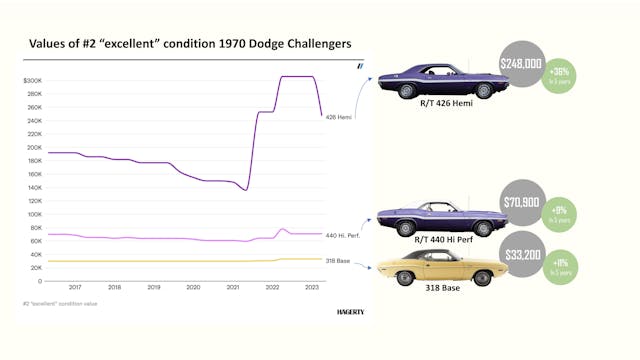
The two-barrel, 318-powered Challenger and Charger have seen a similar uptick in value as the 375-hp 440 cars have, but not nearly as large as that of the 426-powered models. We’re used to seeing rising prices of the most desirable trims and engines lead to rising prices across the model range. Typically, and as is the case with the Challenger, the more affordable models often see a less substantial increase.
The curvaceous lines of Mopar’s quintessential muscle car are favored over those of the Challenger, although five years ago the cars’ prices were virtually dead-even. Examples in #3 (Good) condition offer even more compelling value, with the Charger R/T 440 and base 318 coming in at $71,500 and $30,500, respectively. The Challenger follows suit, at $46,300 for the R/T 440 and $21,100 for the base 318.

As far as demographics, Gen X makes up a disproportionate share of quotes for the Charger, at 39 percent; the same cohort holds 32 percent of the overall collector-car market. Those interested in the Challenger, on the other hand, skew a bit older: Baby boomers account for 44 percent of the Challenger market despite comprising 34 percent of the overall market. The interest among younger buyers suggests that Charger values may have a slightly stronger future than those of the Challenger, but the difference between the two quote demographics is not dramatic.
If you’re in the market for one of these attainable two-doors, we must admit that a two-barrel 318 isn’t the most exciting powerplant. But if numbers-matching isn’t your thing, it’s never been easier to build a powerful yet streetable Mopar small-block or swap in a late-model Hemi.
Even if numbers-matching is your thing, that correct engine won’t mind if it sits on a stand while a rowdy 408 gets out to play on the weekend. It’s a well-known fact that even a mild, rebuilt 318 Charger or Challenger that gets driven sounds better, is more fun, and garners much more attention than a 426 Hemi that never leaves the garage.
***
Check out the Hagerty Media homepage so you don’t miss a single story, or better yet, bookmark it. To get our best stories delivered right to your inbox, subscribe to our newsletters.

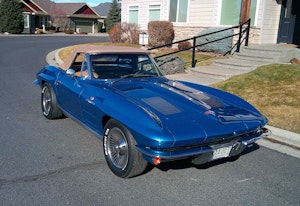
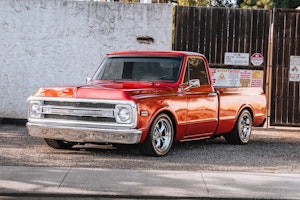
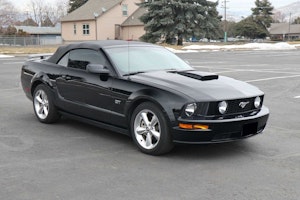

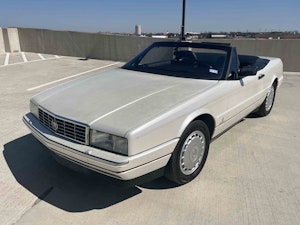





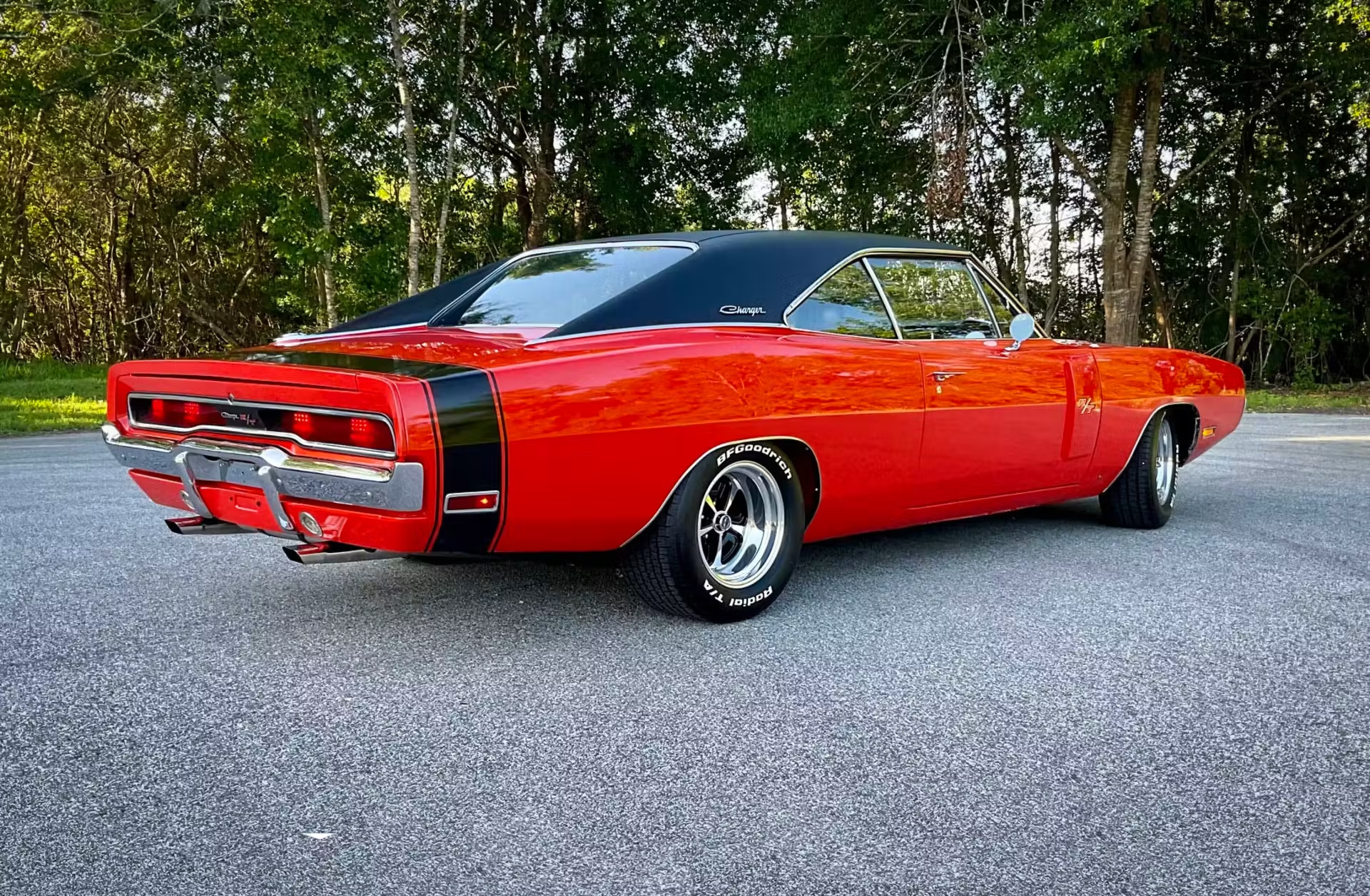
The prices I have seen are bit higher as most have had the 318 removed and a 440 put in place or a new Hemi.
There are few bargains out there right now. It is not a buyers market.
Sadly, unless the economy crashes, it will never be a ‘buyer’s market again.
Most of us don’t restore a car because we want to sell it. Some times it is sold because of necessity. I have a one owner 1970 Challenger I hope to put on the road soon and selling it is not on my radar.
Somd of us get too old to properly maintain or store our cars .So we hope to sell rather than watch them decay
My friend had gtx I was in a charger.both 440 six pack we going home douing 155 mph .coming from Stafford motor speedway. How many miles on that beautiful work of machine how much .this bjdlachance
You must have been dreaming if you were going 155 mph.
It is generally accepted that the slick-top 1969 Dodge Polara CHP unit recorded a top speed of 149 MPH with a 3.23 rear axle during CHP testing*; certainly a peak tune, best-case-scenario when tested. Although most “top speed” stories are BS, before I called anyone a dreamer, I’d have to consider the speeds a heavier, less aerodynamic car with A/C was capable of achieving.
*I can’t find anything more than anecdotal evidence for the 3.23 gears, but I’m inclined to think a high-speed car would have used the 2.94 ratio.
Dream on…155, really???
He’s European, it was 155 kmh!
Had my 69 340 gts at 140 mph on Hwy 20 Que. Ca in 1973 340 -4 speed 323 rear gears.
I’ve had my C6 LS3 to 140 on the flat and Still had peddle! Had a 350ci Camaro goin real fast down a long tall mountain road in New Mexico years ago!
“as of 1971 the cars lost horsepower and their good looks”. Nope,same exact HP and most think the 71,s actually looked better.
Yep…71 was the ultimate year for pure performance styling…as much as i luv 70 B & E bodies, the 71’s were even more bada$$ looking. Auction prices confirm it too…look at the values of the holy grail of musclecars- 1971 Cuda ragtops (only 7 were sold in America w/Hemi’s.) Maybe it was a typo & dude meant to say 72?
ALL Mopar high performance engines were reduced in compression ratio going from 1970 to 1971, with one exception, the 426 Hemi. The 383 Magnum getting the biggest reduction of them all.
Yup exactly this! Where this line even came from “The curvaceous lines of Mopar’s quintessential muscle car” What curves on a 68? This author, like everyone else online, is drooling over 2nd gens and only them. Tell me you know basic info about Mopars without telling me. As soon as they wrote this “as of 1971 the cars lost horsepower and their good looks” Couldn’t take anything seriously.
My 72 SE turns heads all day – love that beast!
Agreed, hadn’t realized the 1970 was still a second gen (not a mopar guy). I MUCH prefer the lines of a 71-74.
440 was the same but the 383 took a big hit. Comp dropped from 9.5:1 to 8.5:1 and HP dropped 30 as advertised in the Dealer Data Book.
The mild state of tune for the slant six and 318 engines are by far the best buy and have all the power you can resasonably use plus efficiency and durability and a better balanced chassis. The 318 has the same torque as the 340 and low and midrange is where you do ALL of your driving. If you actually use all the power from the big engines about all you will ever accomplish is making people think you are delivering pizzas for Dominoes, as everyone knows, they are the fastest drivers out there. It’s hard to look smart when you are driving like a punk.
you don,t have your facts straight
True, the lower-powered standard models will cost less than the performance variants, and ’70 Chargers are slightly less expensive than the ’68-’69 models. But knowing these cars, I see serious issues with many of the high-buck cars at auction, though the cameras try to pan away from them. There’s a lot of perfumed stuff out there, whether online or at auction. The best ones are not inexpensive.
I have a 73 Charger SE that I bought new in Detroit in 73. 318 and humbly get’s out and leaves my 2014 CTS Coupe with similar engine behind. There something special about a Charger that turns 50 years old!
3rd gen. cars that were ignored for years, are making a big comeback. Mine frequently gets more attention than cars 4 times its value at shows. Here we call them the “forgotten generation”. If you don’t like the stock H.P., try tweaking it a bit. I tweaked the holy bejeebies out of mine.
Thanks Jaybird…I know the feeling…the young ones are drawn to stock and preservation…my 73′ ( Detroit sheet metal ) long front end and short rear end has increasing appeal at local shows.
A friend had a 1973 Charger SE with the 318. It was quiet, comfortable, and a beautiful blue (B5?); quick was one thing it most certainly was NOT, however. Based upon other 318-engined Mopars of the time whose test I recall, I believe it would have run 0-60 in about 10-11 seconds with automatic. A 2012 CTS tested by Consumer Reports, with the 3.6 V6, ran 0-60 in 6.8; the standard 270 HP 3.0 would likely be about a second slower, I would guess. In other words, I would not expect a stock 318 Charger to run anywhere near the pace of a 2014 CTS.
I can totally concur. My wife’s 2006 CTS is way faster and quicker than one would predict, and she drives it that way. My spare is a ’69 Coronet Super Bee Tribute, 440 6-pk, with Fi-Tech 6-pk EFI, 3:55 gear. Quick, but don’t disqualify the CTS. Make a bet and it could ruin your day.
I see many cars cloned that are being passed off as the real deal. There are more 70 Chevelle SS’s than GM ever produced. Same with Hemi. When you do find a base car, and there are few, they still want a huge $ for junk. Most of the base cars have lost their base engines. I actually prefer to see a six cylinder car at a show because they are DIFFERENT. I own one myself: 1969 Fire Bird with the OHC 6. I also got bored with Street Rods at shows because how many SB 350 Chevy engined cars can you stand? I can appreciate odd balls and four doors now. I could not care less about aftermarket performance mods on street cars. Do what you want, but I just pass them by. If I’m in the market, I will NOT pay a premium for to have a car with special little emblems on them that only jack the price.
I agree, I was at a show and there was a 57 Vett with a Ls something and a turbo set up, also there was a Shelby clone with 500+ horsepower. Both owners made the statement that the cars were too much.
What fun is having something too powerful to drive?
I too look for the six cylinder at shows. You mentioned the Firebird ohc 6 . At the last Gm nationals there was one for sale, it gathered lots of attention. Give me a 67 Barracuda with a four on the floor, some brake and handling modifications. The leaning tower O power (slant six). With some mods (four barrel – Sniper) a mild cam and header. I will be a happy camper.
Sorry, wrong. Agree with all of the comments above. All the classic Mopars are grabbed up and stashed away by the fanatic Mopar community. Are there affordable ways into the club? Yes 64-67 Barracuda. Dodge Darts. Full size anything. Surpriseingly, the Hurst 300 is kind of a bargain. So are Imperials. Trucks still lag behind their Chevy and Ford counterparts. Just be advised that what you save on purchase will likely get eaten up in restoration costs, so buy the best. Occasionally, you’ll see a Coronet or Belvedere in nice shape. How about a cl;assic Plymouth or Dodge police car? And Seventies Plymouths and Dodges were among the biggest wagons ever- plus many had big block power. Hey, you shoulda had me write this one!
Spot on Scott B! Your simple yet expansive examples tells me you know Mopars and the community.
We own a survivor 1965 Plymouth Belvedere II 4 door Mom and Pop sedan. It had under 17000 original miles on its 318 Commando. Plenty of power for us and just fun to cruise around in. Beautiful condition, paint, chrome, interior, engine, under carriage, all pristine. Love it!
56 year old dodge coronet 440 4door 318 auto with real factory air. guess what it runs great it sat 25 years before i got it a year ago.
Interesting thing is that the most desirable cars (Hemi and Six Pack) are driving parts prices through the roof. It’s not uncommon to see a rusty slant six or 318 Charger with missing interior and drivetrain with an asking price of $20k+. Charger specific parts are higher. It’s near impossible to build one for less than what they are worth restored. Finding a deal on a complete, restored car is the better bet right now.
You can thank The Dukes of Hazard TV show for destroying lot’s of ’68 Chargers
My ’69 GTX was rated at 375 horse ( a 440 ). My ’71 GTX was rated at 370 horse, also a 440, but was slower in the quarter by over a second, and 6 mph slower in the traps. Lower compression ratio was one factor. I thought Dodge was the same. ??
Dan, the trick is to increase compression ratio and having the pistons zero decked. Plus a factor rated gasket on the heads. If its a thick gasket- don’t use it.
Mopar (and Ford) did not cut compression and power until 1972. Maybe your 71 had a different gear ratio?
Are you referring to the 440 or all Mopars? Dealer Data shows the Dodge 440 had the same comp ratio & HP for ’70 & ’71 but the 383 HP took a hit. Comp dropped from 9.5:1 to 8.5:1 (factory service manual states 8.7:1). HP dropped from 330 to 300.
I’m past the point of pursuing cars like this (I’m comfy in my Lexus these days), but the Charger still makes my heart skip a beat. IMO THE most beautiful car of the era.
Dan, the trick is to increase compression ratio and having the pistons zero decked. Plus a factory rated OEM- Genuine Mopar or similar gasket on the heads. If it’s a thick gasket- don’t use it.
And these dealers and sellers are “flippers”. They portray a car incorrectly, don’t really know what’s under the hood yet call it “original”…..Catalina with a transplanted 455, big difference between one mfg in 1970 and one mfg in 1977..do they know? nope. Gateway, tack on their vig of $7500 and too bad. Or the guy with the Barracuda who says its been restored a few years ago. The chrome looks like its been hit with a ball pean hammer, the carpeting in the greenhouse is fadded to a light brown, and the kick panel has the red worn off and the dashpad is home made! Or the 65 olds 442 touted as a “hurst” olds…. r u kidding.. didn’t make one in ’65. It, too has a 455, but the seller doesn’t know if it’s an olds, pontiac or buick. He claims he knows Mopar, so when I responded my telling him, “then you know a 440 from 1968 GTX has a lot more HP and Torque than one from 73 GTX
the real bargain fun car was the 1972-1974 Challnger Rallye 340. I had one that was stroked to over 400hp and I bought it for $10k (rough driver) before the pandemic. Sold for $28k during the pandemic.